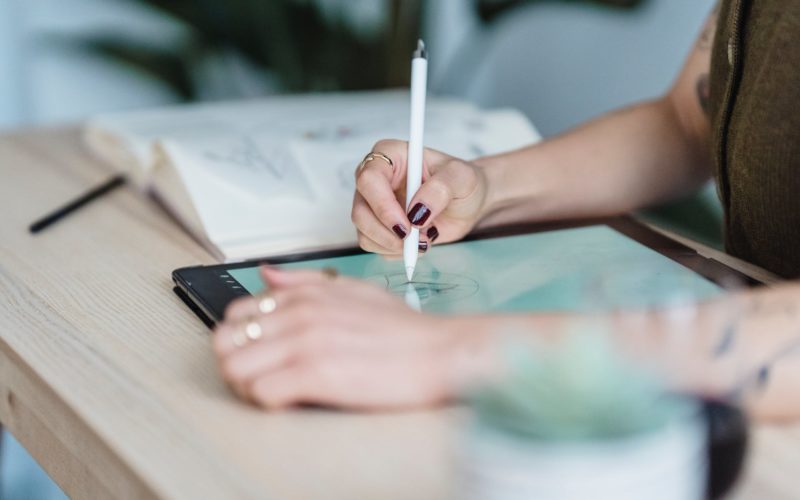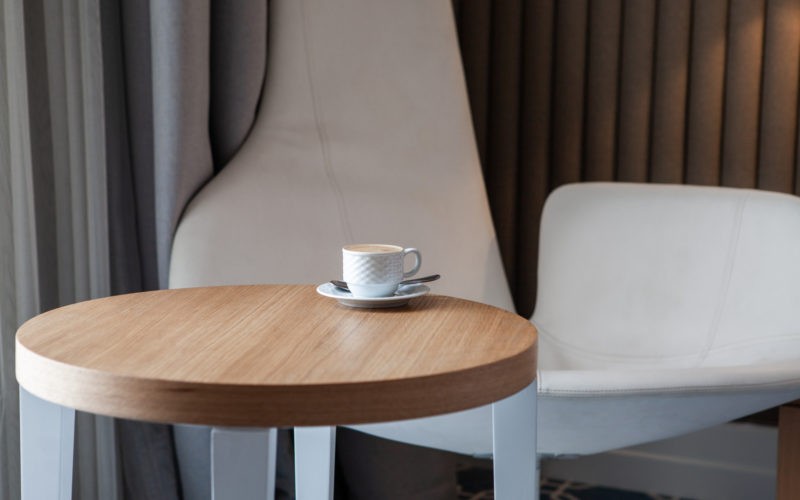From graphic design to architectural design and everything in between, the importance of collaboration cannot be understated. To satisfy client expectations and bring your vision to life, you must have seamless communication before, during, and after a project. Luckily, creative tools and techniques continue to evolve to enhance this synergy in the design industry. The following will give you a more in-depth look at the current trends shaping creative fields and how you can work within them.
Automation and Design
Creative endeavors are typically lauded for their hands-on approach to garnering one-of-a-kind, artistic results. However, there are ethical, considerate ways to automate certain aspects of design.
After all, automation can increase profits and decrease risk if done correctly. Automation can enhance efficiency, mitigate risks, and streamline collaborative processes. When used correctly, tools like cloud storage and AI-driven document automation allow for quicker, safer transactions between team members and clients.
Automating tasks in the design industry opens up more room for meaningful collaboration and lets you allocate more of your time and energy to creative thinking. Using software to automate tasks, like removing backgrounds in photos or making simple animations, can keep things consistent across teams and even follow branding guidelines if coded correctly.
Additionally, ethical considerations, such as ensuring diversity and inclusivity in the design process, can be embedded into automated workflows. This helps to eliminate biases and promote responsible design practices. Of course, biases in automation can seep in through the data collection and machine training processes because these are run by humans.
However, you are more in control of your workflows when they are centralized in one place and automated to produce consistent results. Then you can pinpoint more effectively where the biases are originating and work to mitigate them. Ultimately, by leveraging automation ethically, the design industry can cultivate a culture of collaboration that drives creativity, efficiency, and social responsibility.
The Artificial Intelligence Impact
An even more divisive subject in the creative industry is the introduction of artificial intelligence (AI) into the mix. The authenticity of AI-generated art has been under intense scrutiny. Artists and the public, alike, are concerned about the erasure of human-made art if it can be automatically generated by prompting an AI platform to do so. This brings up all sorts of arguments about whether or not AI is positive for the art industry, and even if AI is capable of being creative, but some practical applications are lying under the surface.
AI and design may not be best friends, but they can have a harmonious relationship if harnessed correctly. Here are some examples of AI use cases that make a more collaborative creative space for all:
- Generative AI to create websites, stories, art, and music;
- Increased accessibility;
- Virtual reality and 3D design capabilities;
- User analysis for optimal UX/UI design;
- Personalized, AI learning experiences for designers;
- Machine learning to enhance collaboration.
When used responsibly, AI can increase equality in creative fields and provide insights into user-friendly, appealing design. Just remember to use AI as inspiration or as an aid to your existing creative skills, and don’t claim that AI art is human-made. Then, you can collaborate with fellow artists and come up with something completely original.
Collaborative Tools
Machine learning holds tremendous potential to revolutionize collaboration within the creative industry, particularly through its integration into design tools. By analyzing vast amounts of data, AI algorithms can offer valuable insights into user preferences, trends, and creative patterns.
Enhanced Communication
AI can increase inspiring moments and mitigate creative blocks in collaborative tools, but it can also enhance communication. Workplace communication tools are already widely used to streamline company-wide conversations and information sharing. AI-powered language processing capabilities can assist designers in generating clearer and more impactful messages, ensuring that ideas are conveyed effectively within a collaborative environment. Natural language processing algorithms can help refine and suggest improvements to written communications, making them more cohesive and engaging.
Additionally, AI-driven chatbots can facilitate smoother communication. They provide instant responses to common queries or offer relevant information, reducing delays. You can reply to team members or clients with suggested messages or tweak them to fit the situation, saving you time and increasing clarity and consistency. Furthermore, AI can analyze communication patterns and preferences. This enables your tools to tailor notifications and updates to individual designers, ensuring that the right information reaches the right person at the right time.
Better Workflow
AI also enables these collaborative platforms to provide personalized suggestions during your workflow. This can spark ideas and foster a more inspiring creative process. Machine learning algorithms can facilitate real-time collaboration by predicting potential roadblocks, optimizing project steps, and suggesting relevant content or design elements. As AI continues to evolve in this way, its ability to adapt to individual and team preferences will play a pivotal role in enhancing creative synergy. To support this creative synergy, tools like a photo gallery widget enhance visual collaboration, letting you organize, display, and share design assets seamlessly with clients and teammates. This streamlines feedback loops and ensures everyone views the most up-to-date visuals in a centralized, professional environment.
Decreased Costs
AI tools can also reduce costs in some cases. Implementing these tech solutions can minimize costly mistakes caused by delays, miscommunications, missteps, or human error. You can share files more quickly, spread important information, track time spends, assign tasks, integrate user calendars, and provide your whole team with real-time updates on projects.
By enabling simultaneous access to project files, design software, and project management platforms, collaborative design tools eliminate the need for extensive coordination meetings. This not only accelerates the design process but also minimizes potential errors that may arise from miscommunication. Geographical locations are also able to be transcended without costly traveling, allowing you to collaborate with clients and other members of your team regardless of time and proximity. You can even use financial tracking tools to keep tabs on project spend.
Moving Forward With Design Collaboration
Keeping up with collaborative tools and trends in the design industry allows you to stay ahead of the curve. Implementing tools slowly and offering knowledge bases for each is the best way to foster a transparent workflow. It also allows team members to provide instant feedback and make revisions promptly. The result is a streamlined and cost-effective design process, as resources are optimized and the overall project timeline is shortened.
The ability to work collaboratively in a virtual environment not only reduces operational costs associated with physical workspaces but also enhances the overall creativity and innovation within the design team. Take stock of your current processes and continue to look for ways to use AI and other automation to ethically boost your design process, as this will be the overarching trend for years to come.
⸻ Author Bio ⸻

Sam Bowman enjoys writing about people, tech, business, and how they merge. He enjoys getting to utilize the internet for the community without actually having to leave his house. In his spare time, he likes running, reading, and combining the two in a run to his local bookstore.












